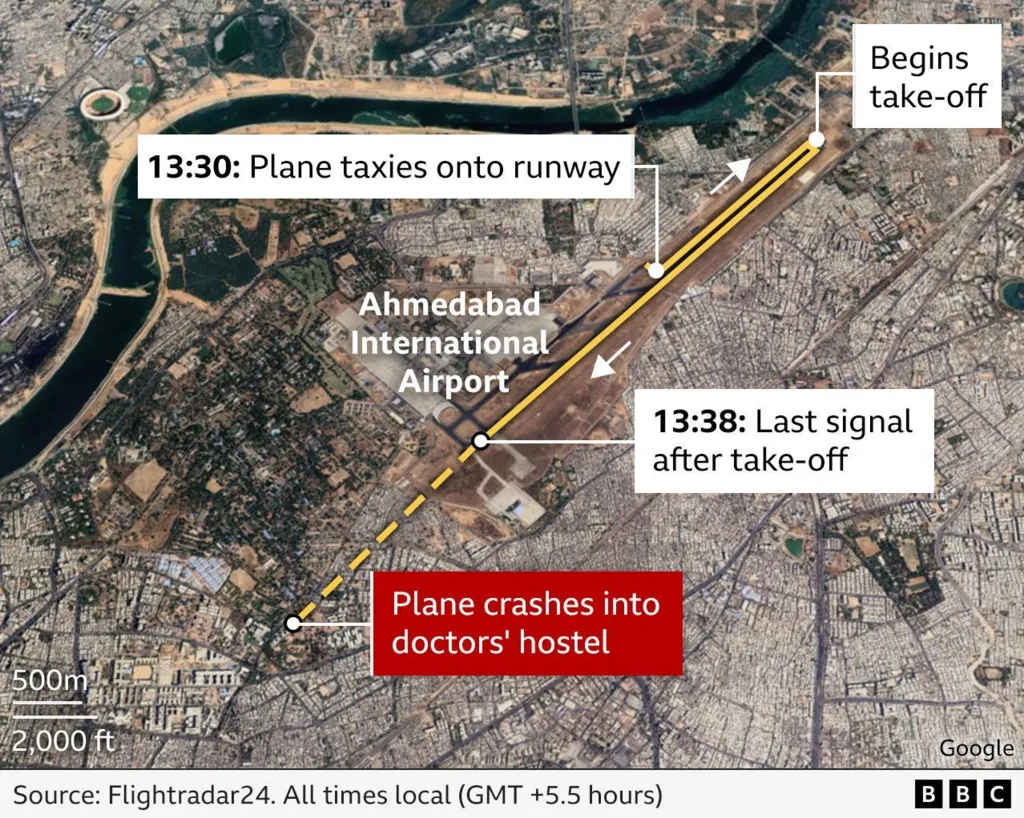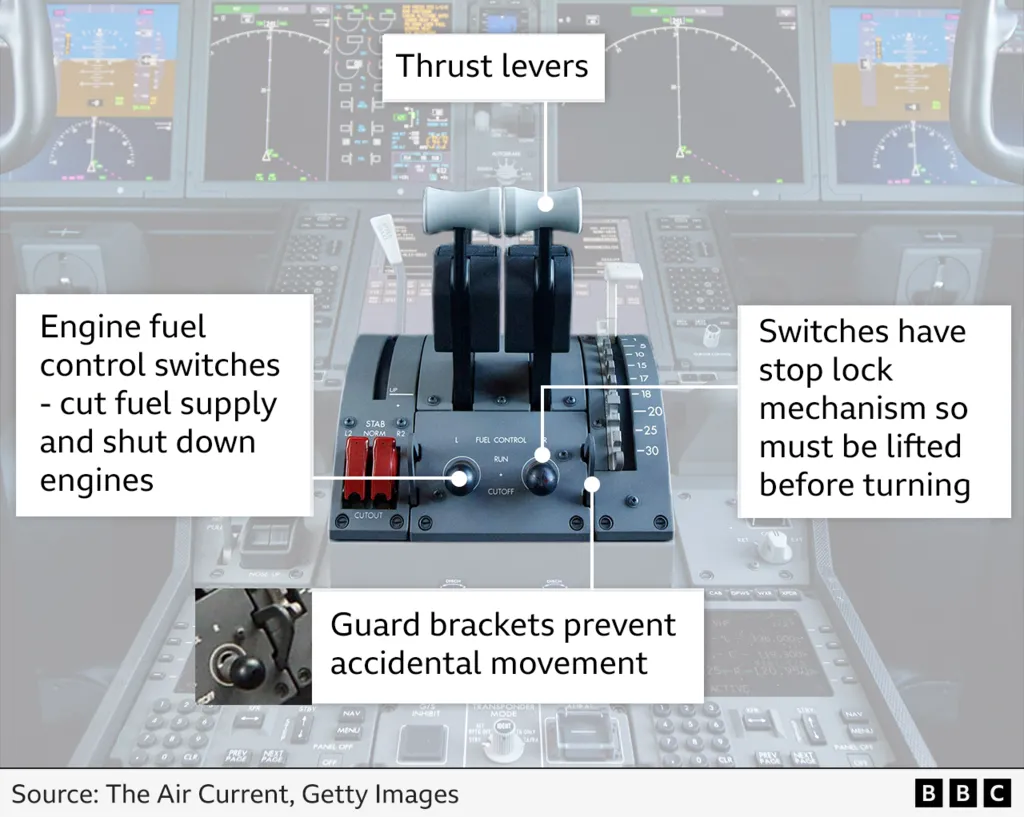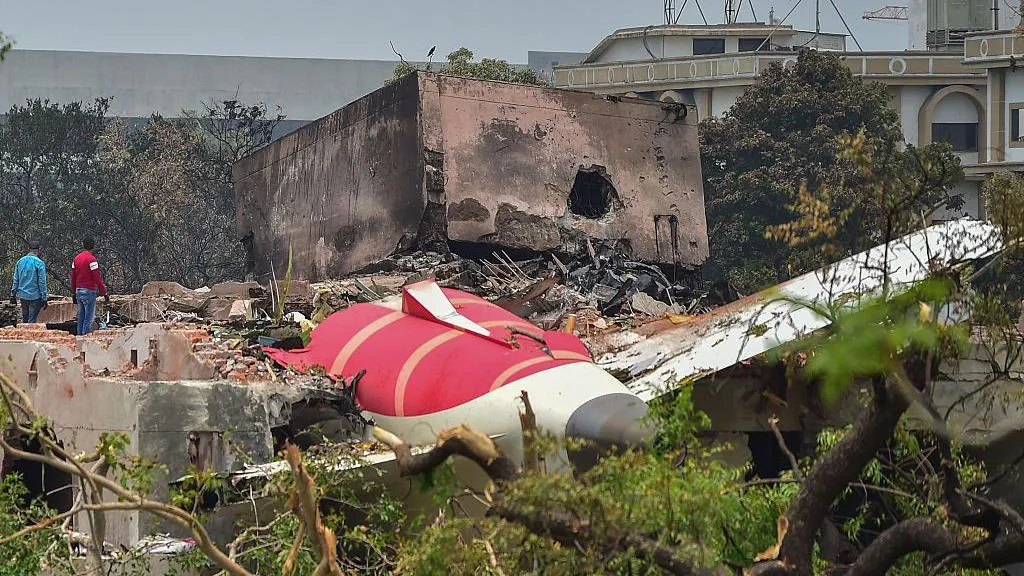Air India Flight 171 Crash: Cockpit Audio Deepens Aviation Mystery
Air India Flight 171 Crash: Cockpit Audio Deepens Aviation Mystery
A catastrophic event that claimed the lives of 260 individuals has taken a bewildering turn as preliminary findings into the Air India Flight 171 crash reveal disturbing details from the cockpit voice recording. The investigation, focusing on the moments after takeoff, has uncovered a perplexing sequence of events that led to the horrific crash in Ahmedabad.
Just seconds after leaving the runway, a critical failure occurred: both of the Boeing 787 Dreamliner’s fuel-control switches were moved to the “cut-off” position. This action, typically reserved for post-landing procedures, effectively starved the engines of fuel, leading to a complete loss of power. The chilling audio captures a pilot questioning the other, “why did you do the cut-off,” with a baffling response indicating denial. The ambiguity of who was at the controls and who spoke the words only adds to the deepening mystery. At the time of the incident, the co-pilot was piloting the aircraft, while the captain was in a monitoring capacity.

In a desperate attempt to regain control, the switches were returned to their normal inflight position, initiating an automatic engine relight sequence. However, by this point, the aircraft had been airborne for less than 40 seconds. At the time of the crash, one engine was partially recovering thrust, while the other had relit but had not yet regained power. The aircraft plummeted into a densely populated neighborhood in Ahmedabad, one of India’s most devastating aviation disasters.
Investigators are meticulously examining the wreckage and flight recorders to piece together the events leading up to the crash. The preliminary report, released after extensive analysis, highlights the baffling nature of the fuel-control switches being moved to the “cut-off” position. These switches are designed with a robust locking mechanism, requiring a deliberate action to pull up before flipping, a safety feature intended to prevent accidental engagement. Furthermore, protective guard brackets are in place to shield them from inadvertent contact. Experts emphasize that manually activating both switches simultaneously would be exceptionally difficult, making accidental deployment highly improbable.

“It would be almost impossible to pull both switches with a single movement of one hand, and this makes accidental deployment unlikely,” commented an unnamed air accident investigator, underscoring the anomaly of the situation. This sentiment is echoed by aviation experts like Shawn Pruchnicki, a former airline accident investigator, who questions the motive behind such an action, stating, “Was it intentional, or the result of confusion? That seems unlikely, as the pilots reported nothing unusual.” He further elaborated that while pilots might make errors in emergencies, there was no indication of such a situation on Flight 171.
The cockpit voice recording is considered paramount in unraveling this mystery. Aviation experts stress the importance of accurately identifying the voices of the pilots to understand who manipulated the switches and why. Peter Goelz, a former managing director of the NTSB, highlighted the need for a complete transcript and voice identification. The absence of cockpit video recorders is noted as a drawback, as it could have provided definitive visual evidence of the crew’s actions.

Further complicating the investigation is a Special Airworthiness Information Bulletin issued by the US Federal Aviation Administration in December 2018. This bulletin highlighted that some Boeing 737 fuel control switches were installed with the locking feature disengaged. While not deemed an immediate safety risk requiring a mandatory Airworthiness Directive, the same switch design is present in the Boeing 787-8 aircraft, including the one that crashed. Air India, not being legally obligated by the advisory, did not conduct the recommended inspections, leaving open the question of whether this design anomaly played a role in the disaster.
Experts are exploring various possibilities, including potential electronic interference with the fuel control unit or an issue with the locking mechanism itself. The deployment of the aircraft’s Ram Air Turbine (RAT), a crucial emergency backup system, further supports the conclusion that both engines had failed. Additionally, the landing gear was found in the “down” position, suggesting the pilots, in their critical moments, were focused on attempting to regain control rather than retracting the gear. The sequence of events – the fuel cut-off, the attempted restart, and the ultimate loss of power – painted a grim picture of a catastrophic failure that investigators are determined to fully comprehend.
The investigation continues, with a focus on obtaining clear voice identification from the cockpit recorders, a comprehensive transcript, and a thorough review of all communications. The findings of this investigation will be crucial in understanding the sequence of events that led to the tragic loss of Air India Flight 171 and in preventing similar disasters in the future.



Post Comment